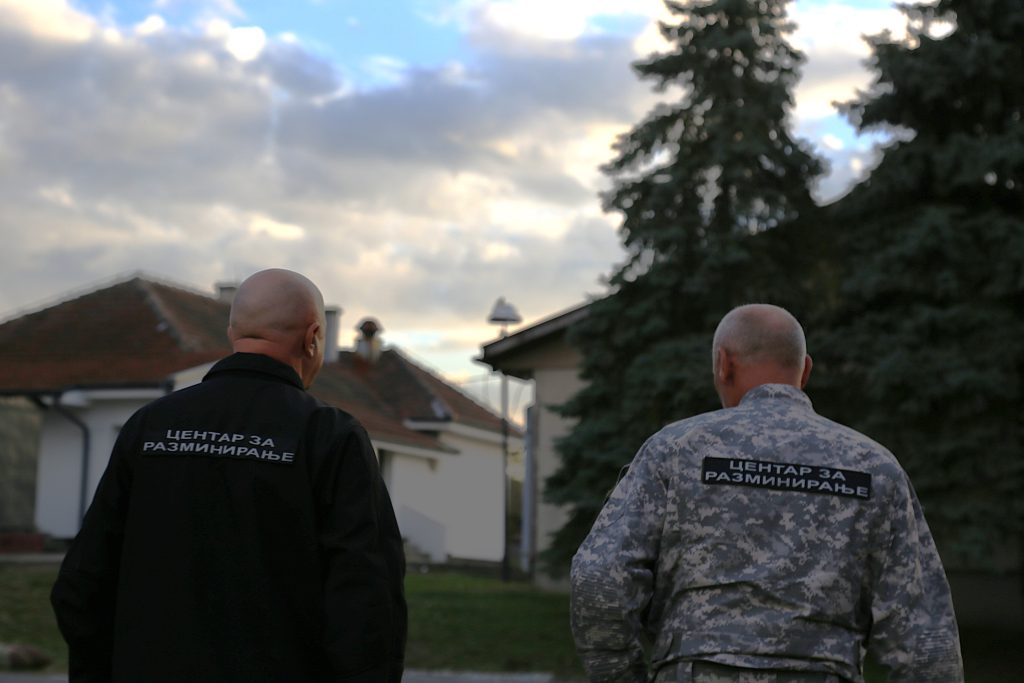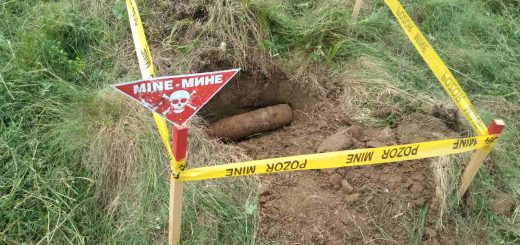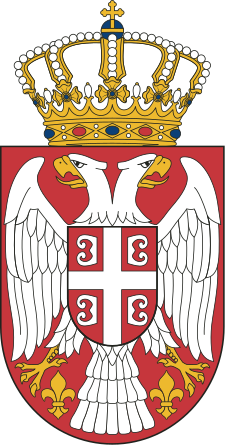6 th November – Serbian Armed Forces Engineering Day – Honourable Tradition and Dedication to Military Profession
The beginnings of Engineering date back to the time when man sought to adapt natural objects to protect himself from elemental disasters and enemies.
On November 6, long ago in 1865, a decision was made in the Kingdom of Serbia on the formation of the engineering profession.
The first engineering units – pioneer troops were formed in 1860, and pontoon troops in 1862.
In the second half of the 19th century, international factors and the environment influenced the process of reorganization of the standing army of the Kingdom of Serbia. Army branches were formed on the model of the allied armies in that period.
In the Kingdom of Serbia, on 26th October, 1865 (that is, 6th November according to the new calendar), the Law on Amendments and Supplements to the Law on the Organization of the Army was passed.
This law regulated that the pioneers and pontoonists should be separated from the artillery and that a special army branch be formed – engineering, which, in addition to the infantry, artillery and cavalry, formed the backbone of the army at that time.
Practically, since that day, engineering appears for the first time as a separate army branch.
This significant date from the history of the development of the Serbian Armed Forces was taken as the Engineering Day of the Serbian Armed Forces.
In the recent past, in the wars that took place in these areas, engineering successfully performed all the assigned tasks and obligations. It showed exceptional courage, determination, top-notch competence and professionalism.
In Serbia, the pioneer and pontoon battalions were united into a regiment in 1874, and after the Serbian-Turkish wars, Engineering was expanded into other specialties.
Until the beginning of the First World War, the organization of Serbian Engineering did not change significantly. In the pursuit after the breakthrough of the Thessaloniki front, Serbian Engineering stood out the most in building bridges and repairing destroyed buildings on the roads.
In the period between the First and Second World Wars, technical development was marked by the development of watercraft and the beginning of mechanization and motorization. During the Second World War, Engineering developed under special conditions. Among the basic tasks were communications diversions. From the strike groups for carrying out diversions, at the beginning of Second World War, the People’s Liberation Army Engineering grew to six Engineering Brigades at the end of the war, one of which was the Engineering-Railway Brigade.
In addition, Engineering is engaged in the repair and maintenance of communications in the liberated territories. In the period of the final operations for the liberation of the country, engineering operations were aimed at supporting the army’s offensive operations.
Today, the Engineering branch of the Army is equipped in accordance with the capabilities of the country, capable of performing engineering actions (prevention, overcoming obstacles, arranging roads and fortification) in modern conditions of warfare.
The number and variety of tasks that the engineering units carry out led to the division of the Engineering branch into several specialties, so today there are: Survey, Pioneer, Pontoon, Amphibious, Road, Bridge, and Fortification and Camouflage specialty.
On this occasion, we spoke with retired colonel Mario Arbutina and retired lieutenant colonel Predrag Stančević, who during their careers served in the General Staff of the Serbian Armed Forces and after retirement decided to join the Serbian Mine Action Centre.
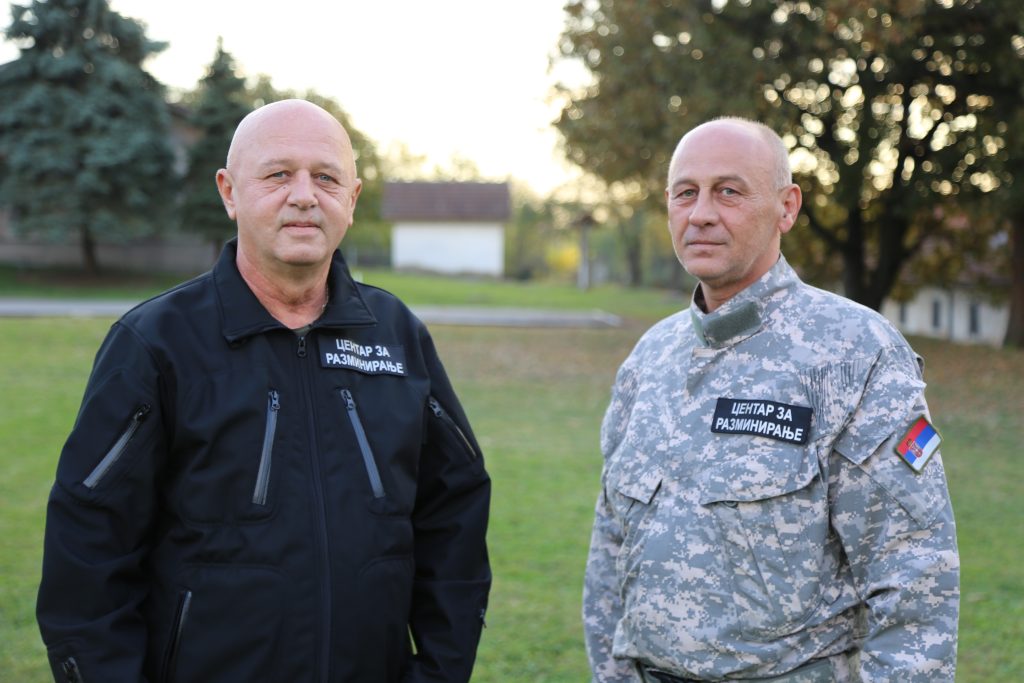
The first interlocutor, retired lieutenant colonel Predrag Stančević, engineering officer, started his military career in 1992 after graduating from the Military Academy. He spent a significant part of his career in engineering units, performing demining and overcoming water obstacles, as well as participating in combat operations. He was a key figure in the formation of demining school in Banja Luka in 1998, which later grew into the Mine Action Centre in Sarajevo. He held important positions in the General Staff of the Serbian Armed Forces and was the author of strategic doctrines. He also actively participated in international humanitarian demining projects with NATO, the European Union and the US Army.
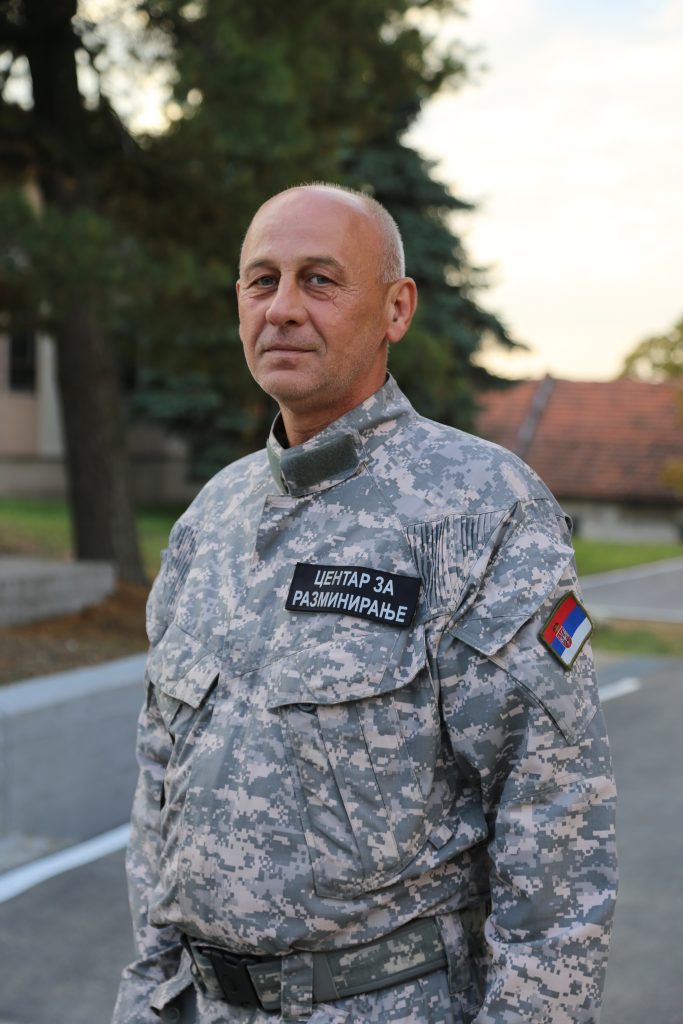
What does Engineering Day mean to you?
Serbia and the Serbian people are known for the thorny path to survival in these areas throughout the centuries. Our Army was always with its people and so were the engineers.
Unlike other branches of the Army, engineers had the privilege of being with their people on the ground throughout their entire development and engagement, both during military operations in war and during non-military operations and in peace, and solving tasks together with the civilian sector.
Branch Day, and thus the Engineering Branch Day, is normally celebrated in the Serbian Armed Forces at work. It is known that engineers spend most of their careers in the field, outside the barracks (assistance to local self-governments in the construction and reconstruction of local roads, assistance to the Serbian Orthodox Church in the arrangement of monastery and church buildings, elimination of the consequences of snowfall, transverse overcoming of water obstacles and elimination of the consequences during flood and others) and of course not everyone is able to be in the barracks on that day and mark that day with a ceremonial parade.
However, engineering officers and non-commissioned officers on key duties (commanders, chiefs, assistant commanders or persons designated by the commander or chief) constantly found time to visit their colleagues in the field, sit under the tent, and often on some improvised benches and tables, so even on tree stumps and to drink coffee together, if there is even a glass of homemade brandy, and have a military lunch together. And that meant a lot to the engineers, and therefore also to me, since I spent almost my entire working life in the field.
Usually active and retired engineers gather on that day, remembering the good and happy moments and on that day when we pay tribute to our engineers who unfortunately died.
How did you become interested in engineering within the Army?
I became interested in engineering within the Army during my studies at the Military Academy. Although at that time, like all students, we were considering which branch to choose, engineering was closer to me from the very beginning because it offered me many opportunities for further education at civil faculties, as well as for obtaining a degree in civil engineering. From a young age, I had an interest in technical disciplines, solving technical tasks and being interested in constructions, statics, geology and engineering works, which further facilitated my decision to opt for this field.

What are the most significant projects you have worked on?
There were many of them in my capacity as an engineering officer. When it comes to demining, every project I worked on had its own specifics. For me personally, the most significant project is the fact that everything I planned, coordinated, organized and controlled passed without incident for my subordinates, and that all planned activities were carried out, especially if you consider that the work of demining in peace may be the most high-risk job.
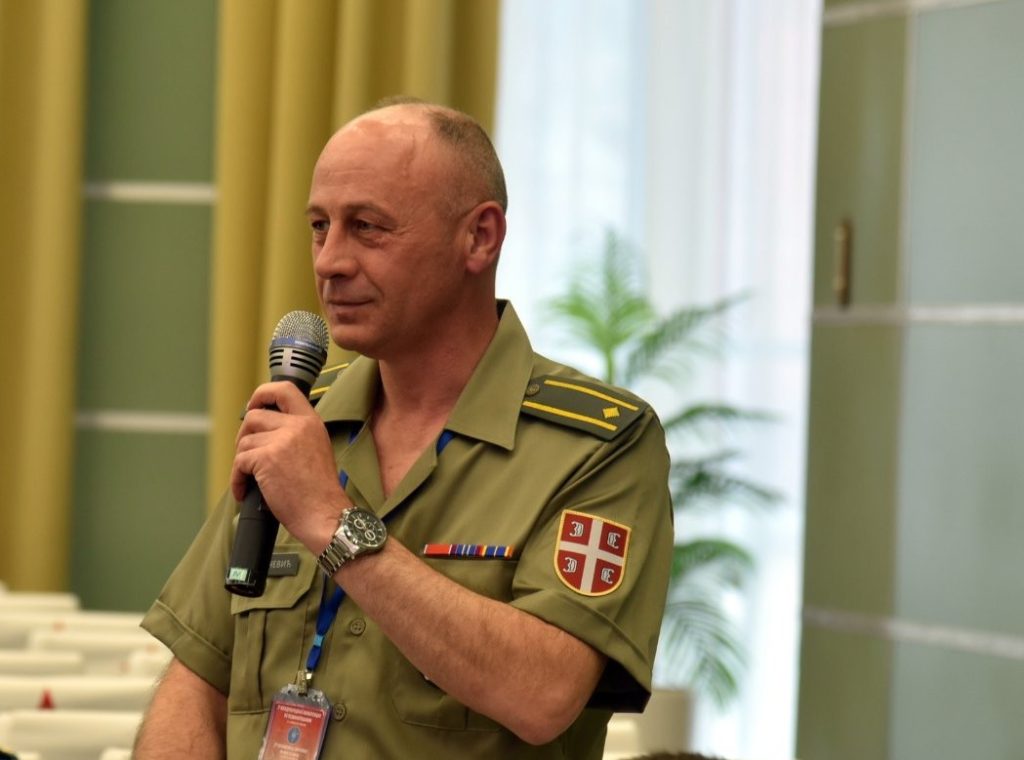
How does engineering contribute to military operations?
And where to without engineering? How to ensure movement? How to cross the water? With what and how to identify and mask? Who should destroy a bridge or road communication if it is necessary to protect other units of the Army and the civilian population, and after all, there is no such army that does not have engineering. There is only a difference, and not a big one, in the organization of the engineering, as well as the equipment and means with which the engineering units are equipped. My personal motto is: “Nowhere without engineering”.
Can you describe a significant moment in your career as a military engineer?
For me, they were all important, both for the Army and for the country as a whole.
I would like to use the opportunity to say from experience that mistakes in work in the field of demining cannot be corrected, that is, they directly affect the endangerment of one’s own life and the lives of others, and the person who commits them is most often their victim.
How does the education and training of engineers in the Army differ from the civilian sector?
When it comes to education, it ends at the Military Academy, I think that there is room to improve training in the field of humanitarian demining even more.
However, training for military deminers, in my opinion, is not very different from training in the civilian sector. I would like to emphasize that in the last three years, military deminers have been trained in our Center according to international standards with our instructors and the support of instructors from abroad. We are trying to ensure that in the future our Center, in cooperation with the Ministry of Defence and the Ministry of Internal Affairs, trains a greater number of deminers for needs at the national and international level.
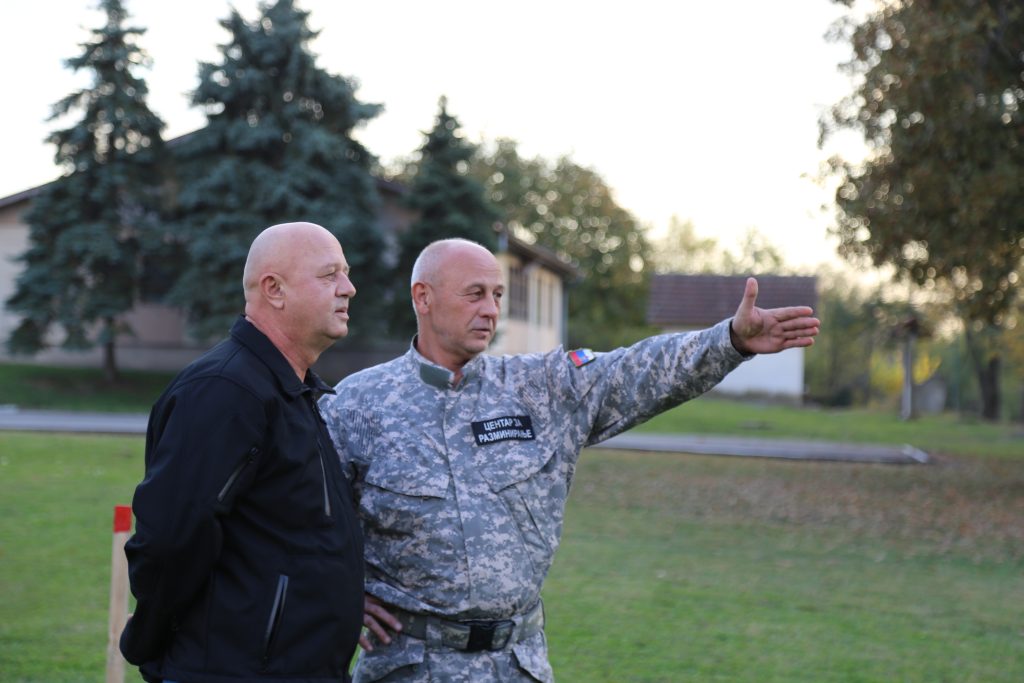
What are the most important aspects of teamwork in engineering projects within the Army?
In my opinion, knowledge, leadership skills, experience and discipline. Of course, the Army is known for that. Others might define these aspects differently, but in my humble opinion, I believe that when it comes to teamwork, these are the foundations.
Also, since I worked in the Army on demining tasks until recently, what I would particularly emphasize is that the demining tasks in our army are currently performed by the most experienced officers and non-commissioned officers of the engineering and technical service who were the first to stand in the ranks of removing the consequences during the NATO bombing of the FRY in 1999 , as well as immediately after that, until today.
How does the Army respond to engineering innovations in military structures?
In short, in line with challenges and threats.
I believe, and I know from experience, that the Army follows modern trends and technological progress and that, in accordance with assessments, it actively participates in innovations.
It is known that our Army has extremely good experts, institutes and centres that deal with innovations, not only in equipment, but in the first place in organization, principles and rules of use, personal and collective protection and more.

In October 2023, the Serbian Mine Action Centre and the Ministry of Defence and the General Staff of the Serbian Armed Forces signed an Agreement on the training of members of the Serbian Armed Forces in demining and removing unexploded ordnance at the Serbian Mine Action Centre, free of charge and in accordance with the needs of the Serbian Armed Forces.
Now you are transferring your knowledge and experience to young colleagues at the Serbian Mine Action Centre, how important is the cooperation of the military and civilian sectors in mine action?
Yes. In the army, in addition to cooperation, the term interaction is also known. The army has always cooperated with civilian structures, and the interaction referred only to military units during the execution of military operations.
When it comes to cooperation in mine action activities, I know from experience that there were and still are different attitudes both in civilian structures and in the Army. However, I personally believe that this gap has been largely overcome and that cooperation is on the rise every day, especially in the field of training, equipping and exchange of experiences. Of course, there is a need to deepen this cooperation in other aspects as well, especially on changes and additions to the normative regulation of this area at the national level, innovations, joint involvement in clearance projects, mine victim assistance and others.
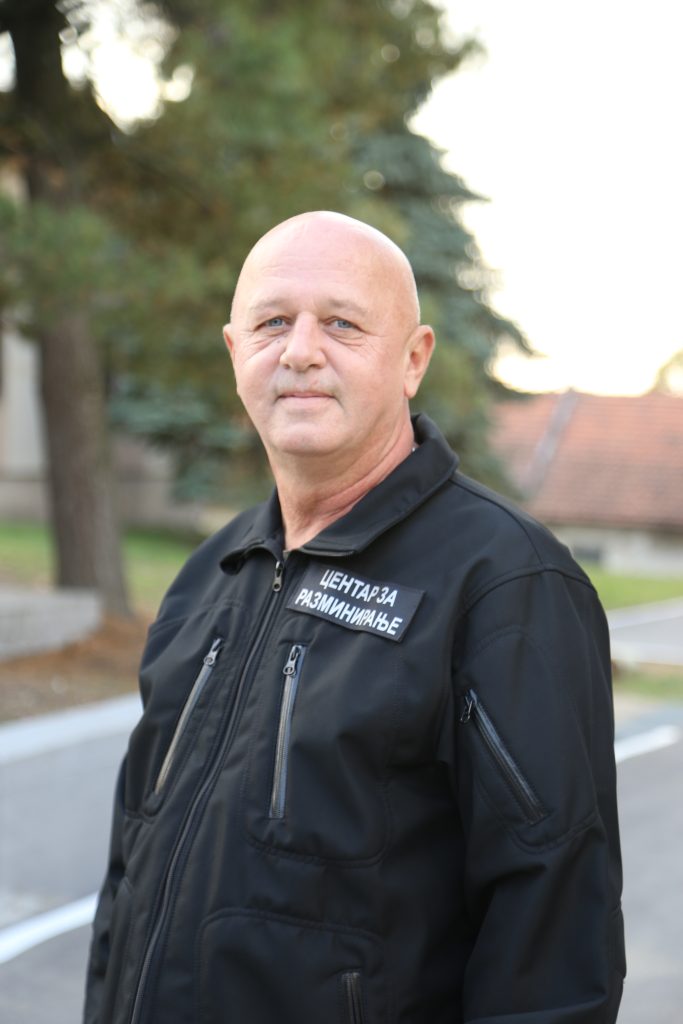
Retired Colonel Mario Arbutina during his 31 years of service in the Army went through various educational and professional phases, completing the Military Academy, as well as multiple command-headquarters and general staff training. He held various command-headquarters posts, and in his career earned numerous awards, including the Defence Meritorious Service Medal, Officer’s Sabre, and Commendations for Outstanding Performance. He was extraordinarily promoted to the rank of colonel, and during his service he gained significant international experience, including courses abroad.
After graduating from the Military High School and the Military Academy – majoring in engineering, and later through a professional military career and additional specialist training, he gained invaluable theoretical knowledge, practical skills and rich experience in the field of planning, organizing, executing and controlling various engineering works and tasks.

According to him, engineering as an army branch can only be chosen by those who like its diversity, difficulty and challenges that it provides and which extends from the construction and reconstruction of roads and traffic roads, the construction and maintenance of bridges, the demolition of elements and materials, overcoming water and dry obstacles, construction and arrangement of shelters and coverts and masking up to the most dangerous and high-risk jobs with mines and explosive devices.

“It is precisely the synergistic combination of theory, practice and experience with the consistent application of prescribed techniques and work performance procedures, team harmony and high coordination of work, as well as the indisputable implementation of all safety and protection measures for people, material resources and the environment, that guarantee the quality, professionalism and success of each project and work.
One of the most challenging and security-complex tasks of engineering personnel is certainly the demining and destruction of unexploded mine-explosive devices and other explosive remnants of war conflicts on the territory of the Republic of Serbia,” said Colonel Arbutina.
Because of the above, he is also personally proud because, as he says, he had the opportunity to be part of the most expert military team for finding and destroying extremely dangerous cluster bombs and aerial bombs of large explosive masses left behind after the NATO aggression against the FRY in 1999. During the implementation of those most dangerous jobs, they did not count the bombs found and destroyed, but the lives of the citizens of our country saved from the lingering and insidious deadly threat.
Now, Colonel Arbutina is selflessly sharing his experiences and knowledge with young colleagues at the Serbian Mine Action Centre.
“Precisely because of their invaluable knowledge, professionalism and practical experience, retired engineers, with the support and cooperation of the Serbian Mine Action Centre as a competent institution, can make their full contribution to professional education, exchange of experiences and further improvement and training of civilians who will deal with the tasks of finding, identifying, removing and destroying unexploded explosive devices, as well as educating citizens and especially children about possible threats and safe actions and procedures in case of finding or encountering a threat”, emphasized Colonel Arbutina.
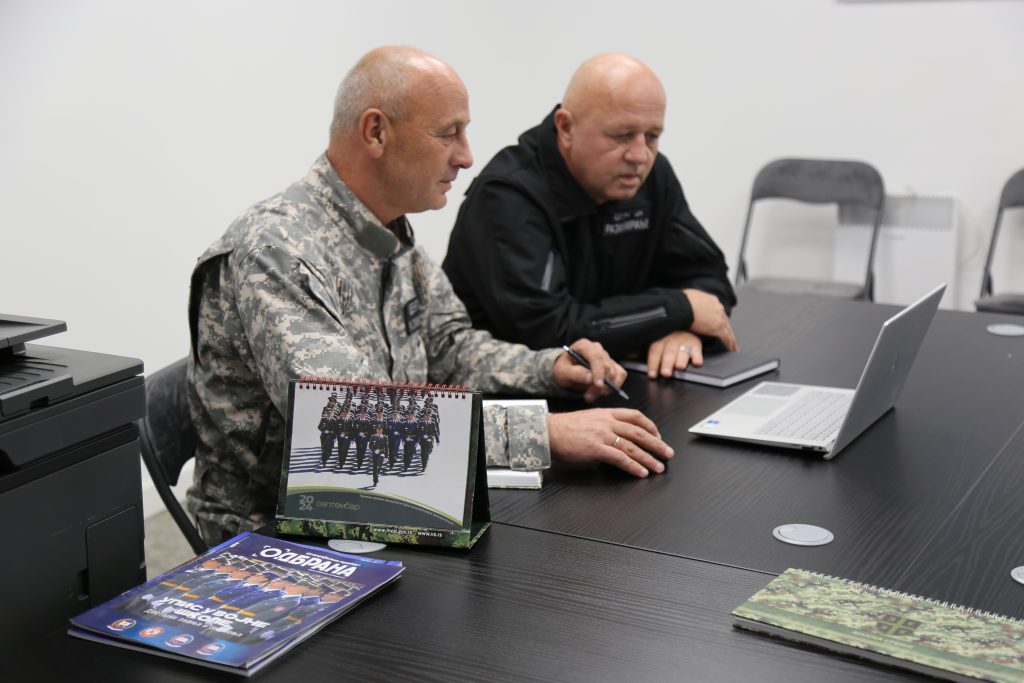
Retired Colonel Mario Arbutina and retired Lieutenant Colonel Predrag Stančević are examples of true dedication to professional and ethical work in the field of demining. Their long-term career in the Serbian Army, as well as their active participation in international projects, brought them a wealth of knowledge and experience that they decided to pass on to their younger colleagues at the Serbian Mine Action Centre.
This intergenerational cooperation not only represents the transfer of professional knowledge and practical skills, but also mentoring, which is of crucial importance for the development of future leaders in this field. Through training and guidance, they are determined to contribute to building a competent and capable team that will be able to meet the challenges in the field of mine action, as well as to continue the advancement and development of this important field.
